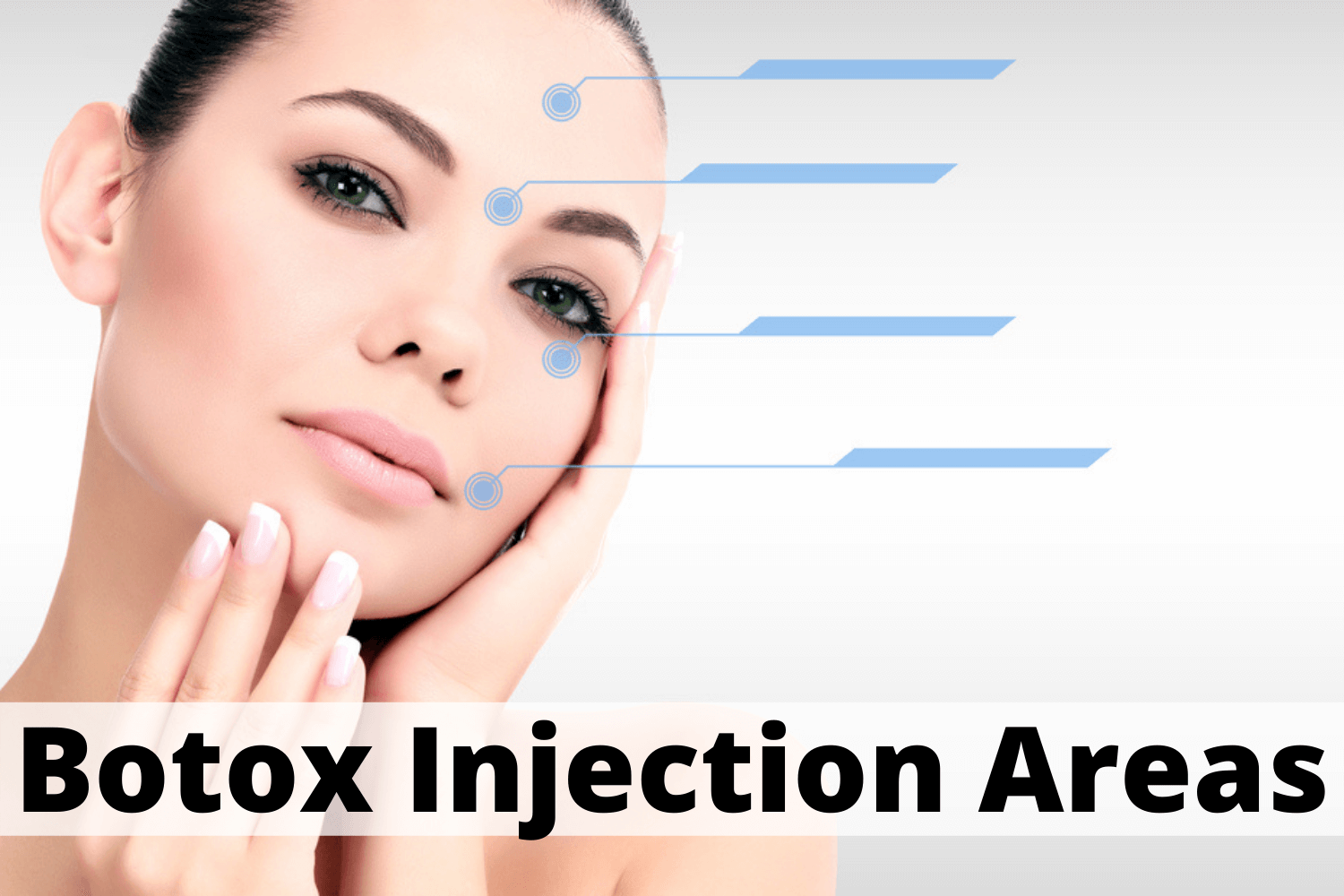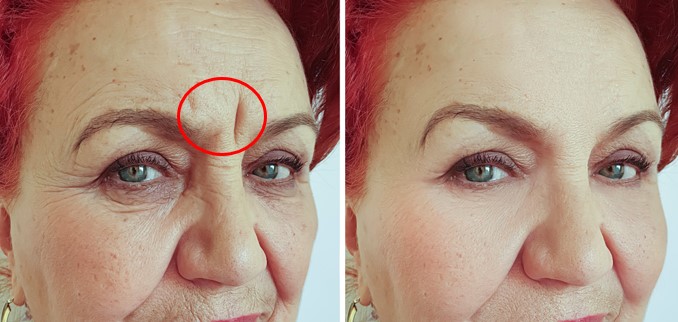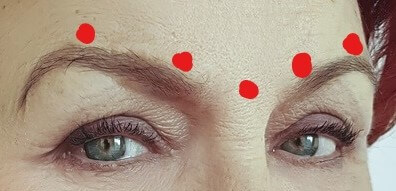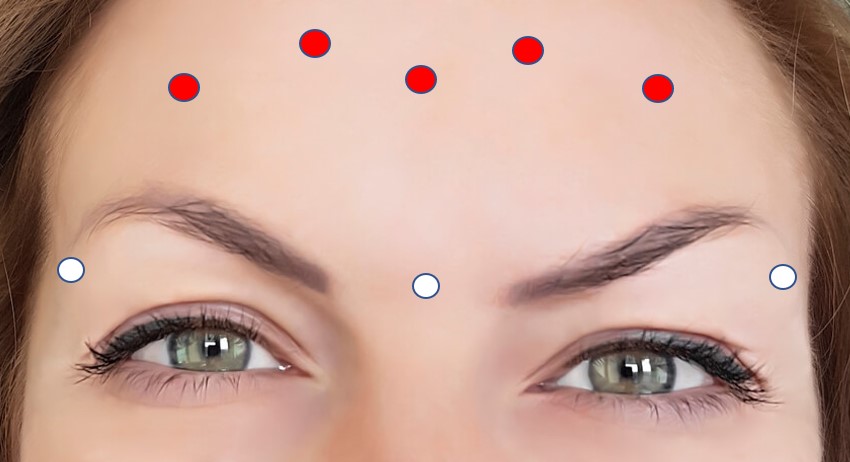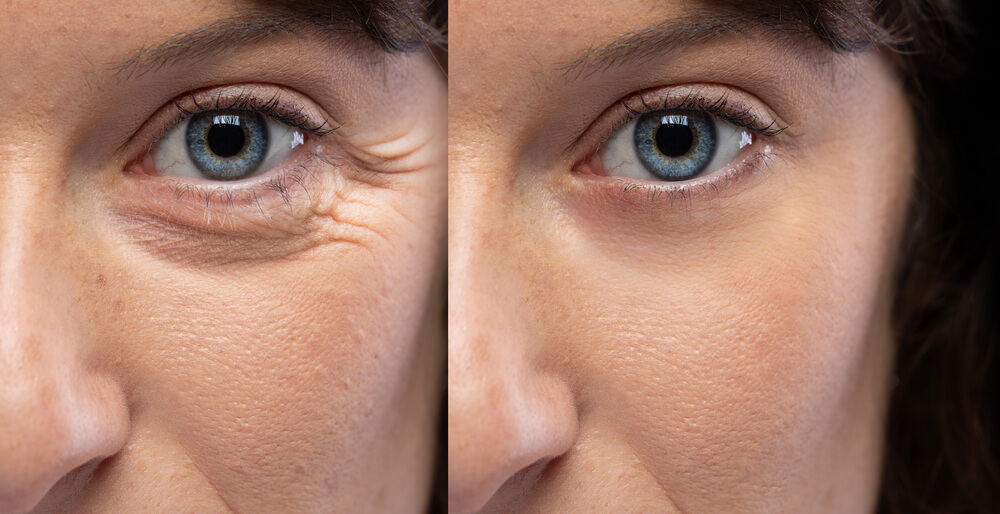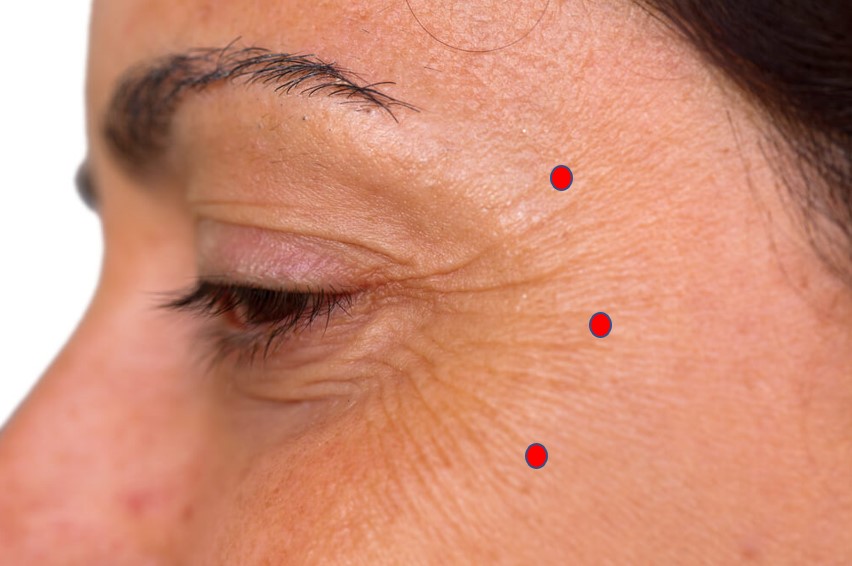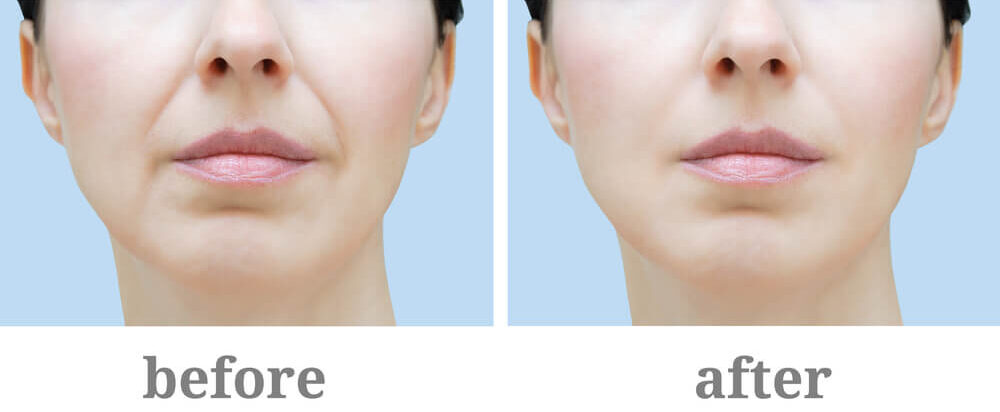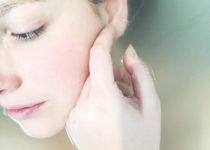16 Popular Botox Injection Areas for Face and Neck Wrinkles
What are the most common Botox injection areas to treat wrinkles? You will learn about what areas can be treated with Botox, as well as how many units are needed for each injection.
The main ingredient in Botox is botulinum toxin, which is extracted from a bacteria called Clostridium botulinum. The ingredient botulinum prevents the contraction of muscles on the face and neck, which in turn relaxes the muscles and smooths out fine lines and wrinkles.
As a person with crow’s feet (wrinkles around the eyes) and frown lines, I decided to do an in-depth study of the various Botox injection areas. My hope is that you will feel more comfortable getting Botox treatments after learning more about how Botox works on different areas of your face and neck.
Surprisingly, only certain Botox injection areas are approved by the US Food and Drug Administration (FDA). Botox injection areas that are FDA approved include areas where fine lines develop between the eyebrows, around the eyes, and on the forehead. Although not FDA approved, areas around the lower face and neck are also common Botox injection areas.
This article will teach you about the most popular cosmetic Botox injection areas on the face and neck to improve your youthful appearance.
If you want to learn about how Botox works, side effects, and other similar medications, check out the article: Botox for Fines Lines: A Complete Guide.
This post is all about the 16 Most Popular Botox Injection Areas for Face and Neck Wrinkles.
Overview of Botox Injection Areas
The face and neck is comprised of many muscles. When these muscles contract over many years, they can result in fine lines and wrinkles.
When injected properly, Botox can relax certain muscles of the face and neck to reduce the appearance of wrinkles.
The Botox injection sites diagram below shows the muscles of the face and neck where wrinkles can develop:

The best candidates for Botox are between the ages of 30 to 50 years old. Botox may not work to reduce wrinkles for the very elderly since their wrinkles are often due to a loss of elastic tissue in the skin, which can cause sagging.
In addition to Botox, there are similar medications that also work for wrinkles. These include Dysport (AbobotulinumtoxinA), Xeomin (IncobotulinumtoxinA), and
Jeuveau (PrabotulinumtoxinA). These medications are not interchangeable since the dosing for each medication is different.
Botox Injection Areas for the UPPER FACE
Whenever our faces express anger or worry, we tend to activate muscles in our forehead, between the eyebrows, and around the eyes. Over time, constant activation of these muscles will lead to wrinkles and fine lines. Fortunately, the forehead, between the brows, and around the eyes are the best Botox injection areas on the face.
1. Eyebrow Wrinkles (Glabellar Rhytides)
One of the most common Botox injection areas is the area between the eyebrows. Overuse of your eyebrow muscles can develop wrinkles in this area which have been called “11” lines since they look like two parallel vertical lines. See the picture of the left below:
Botox, Xeomin, and Dysport can all relax and smooth fines lines between your eyebrows. The effects last about 3 months according to one clinical trial.
About 5 or more doses are given above the eyebrows are administered horizontally from one end of the eyebrow to the other eyebrow. The doses should not be injected below the eyebrow to prevent eye drooping.
See the Botox injection sites for “11s” wrinkles pictured below:
According the the manufacturer, the TOTAL dose that is given for wrinkles between the eyebrows is about 20 units for Botox, 20 units for Xeomin, and 50 units for Dysport. However, the dose you receive may be higher or lower.
The side effects of these Botox injection areas are temporary and mild and include the following:
- Headache
- Heavy feeling or tension on the forehead or eyebrows
- Eyebrow drooping
- Slight muscle spasms on the forehead
2. Forehead Lines
Horizontal forehead lines can develop from repeated contraction of your forehead muscles, especially when you raise your eyebrows.
Fortunately, Botox and similar medications can decrease the appearance of these lines for 3 to 6 months by relaxing the muscles of the forehead.
In the Botox forehead injections sites example below, five Botox injections are given in the mid-forehead (red dots) as well as 3 injections into the brow lowering muscles (white dots):
Treating the muscles that both raise and lower your eyebrows will prevent your eyebrows from lowering too much (which can create an angry look).
Doses for the forehead Botox injection areas can vary. In one clinical trial, total doses of 16, 32, and 48 units were injected into the forehead of the participants. The side effects were similar across the dosing groups. Here were the results:
- At 4 months, those injected with 48 units had the “greater efficacy and longer duration of effect in the reduction of horizontal rhytides [lines].”
It is important that your healthcare provider does not inject too high of a Botox dose or inject Botox too close to your eyebrows, which can put you at risk of temporary eyebrow drooping.
3. Crow’s Feet
The lateral side of your eyes can develop wrinkles over time, especially if you smile too much.
Fortunately, Botox for fine lines around the eyes is very effective at relaxing the muscles around the eyes and smoothing out these wrinkles. See the picture below:
The dose will vary depending on which formulation of botulinum your doctor uses. Below are common doses:
- Botox: 12 to 15 units divided into 2 to 4 injections for each side
- Dysport: 30 units divided into 3 injections for each side
- Xeomin: 12 to 15 units divided into 2 to 4 injections for each side according to one clinical trial
The picture below shows the Botox injection areas that are commonly used for treating crow’s feet.
You should NOT smile or flex your face muscles when you are receiving a botulinum injection. Your face should be at rest. This will minimize side effects such as eyelid or lip drooping.
Additionally, your doctor may press their finger onto the Botox injection areas right after the injection to minimize any bruising.
4. Eyebrow Lift
Eyebrow lowering can occur as you get older, which can create an angry facial expression.
If you desire an eyebrow lift, your doctor should not inject Botox into your forehead since forehead muscles are needed to raise the eyebrows.
Eyebrow lowering can be treated by injecting Botox into the areas between your eyebrows and at the outer edges of your eyebrows.
5. Lower Eyelid Wrinkles
Injecting Botox into the lower eyelid can create a rounder and wider looking eye.
The Botox dose used for the lower eyelid should not be more than 4 units.
You should not get Botox or other botulinum toxin injections in your lower eyelid if you have any of the following medical issues:
- Your lower eyelids get puffy often
- You have had laser surgery on your lower eyelid
- Your lower eyelid does not return back into place quickly when you pull and release it
- You have had certain lower eyelid surgeries such as a blepharoplasty without surgical tightening
Botox Injection Areas for the MIDDLE FACE
6. Upper Nose Wrinkles “Bunny Lines”
Nose Botox is used to treat upper nose wrinkles or “Bunny Lines”.
About 2 to 4 units of Botox are used on each side of the upper nose. Dysport can also be used, but the dose will be about 10 to 20 units.
Watch the video below:
7. Nostril Flares
If your nostrils tend to flare or widen when you smile or laugh, Nose Botox can be used to reduce the flaring. About 5 to 10 units of Botox are used.
This helpful video goes over Nose Botox for nasal flares.
8. Nose Lift
If your nose is slightly pointed downward, Nose Botox can be used to slightly raise your nose tip.
About 2 to 3 units of Botox are injected right below the nose to slightly lift the nose.
See this video below for how it is done:
9. Nasolabial Folds
Nasolabial folds are lines that extend from the outer edges of your nose down to outer edges of your mouth. These indentations can get deeper with age.
About 1 unit of Botox is injected into each of the upper nasolabial folds.
Because this treatment can elongate your upper lip, it is usually not recommended if you have a long upper lip.
Watch this video:
Treating nasolabial folds with Botox works best when used in combination with laser resurfacing therapy and injectable soft tissue fillers.
Botox Injection Areas for the LOWER FACE
Although Botox injection areas in the lower face are commonly treated for cosmetic purposes, they are not recommended for professional singers or musicians who play wind instruments since Botox can weaken your facial muscles.
Make sure you get Botox from an expert who has many years of experience to prevent side effects. If Botox is injected incorrectly in the lower face, you may get temporary side effects such as:
- Drooping cheek
- Crooked smile
- Difficulty using your mouth
10. Lip Wrinkles
Wrinkles around the mouth, especially vertical lines on the upper lip, can develop as you age.
Your lip movement may feel different after your Botox injection. If you are a professional singer or a musician who plays wind instrument, Botox injections around the mouth are not recommended.
Additionally, you should not get injections at the corners of your mouth or at the midline between your lip and nose, which can cause drooping at the corners of your mouth or flattening of the top curvature of your upper lip.
What this video for a good overview of Botox for lip wrinkles:
11. Mouth Frown and Marionette Lines
The corners of the mouth can begin to move down as you age, creating a mouth frown at rest.
Lines can also develop from the corners of the mouth to the chin called Marionette lines. Either Botox or Dysport can be used to treat these conditions.
The Botox injection areas to treat a mouth frown or Marionette lines are located on the sides and in the middle of the lower chin. Weakening these lower chin muscles will allow your upper cheek muscles to raise your mouth corners to their normal position.
The video below shows how Botox is injected to correct lowered mouth corners that results in a mouth frown.
The dosing of Botox are as follows:
- Mouth frown: Inject 2 to 3 units on each side of the bottom chin. An additional 3 units may be injected in the middle of the lower chin.
- Marionette Lines: Inject 2 to 3 units on each side of the bottom chin.
The dosing of Dysport is the same for the treatment of mouth frown or marionette lines: 2.5 to 10 units on each side of the bottom chin.
In addition to Botox, Marionette lines can also be treated with injectable fillers to fill in the deep lines, making them less noticeable.
Botox injections into the lower chin are not recommended if you are a professional singer or play a wind instruments, since these injections can change the way you are able to use the muscles around your mouth.
12. Chin Wrinkles
Chin wrinkles can take on two forms. You can either develop:
- A horizontal chin crease below your lower lip, or
- Dimples on your chin (Orange peel appearance)
Both of these issues are treatable Botox injection areas. They can also be treated with Dysport as well.
The Botox doses are as follows:
- Horizontal chin crease: inject 3 to 5 units on each side of the middle part of your chin
- Chin dimples: inject 5 to 10 units as one dose or divided into two doses on the middle part of the bottom chin
The Dysport dose for chin dimples is to inject 5 – 20 units divided into two doses on each side of the middle part of the bottom chin.
Check out this video on Botox for chin dimpling:
13. Jawline Slimming
Botox injection areas that involve aesthetically reshaping the jawline into a more “V-shaped” appearance is very common in East Asian countries.
The benefit of using Botox and similar botulinum toxin formulations is that you can reshape your lower face without surgery. In fact, one clinical trial showed that the results can last 9 to 12 months.
Possible temporary side effects for masseter reduction are:
- Reduced bite strength
- Difficulty speaking
- Jaw muscle pain
14. Gummy Smile
A gummy smile happens when too much of your upper gums shows above your teeth when you smile.
Botox and Dysport are non-surgical options to treat this condition.
About 2 to 4 injections are used. The Botox injection areas are beside the nostrils, which paralyze hyperactive muscles, reducing upper lip elevation. Check out this video below of how it’s done:
The treatment is generally well tolerated. Some patients may complain of pain, headache, or dizziness.
Botox Injection Areas for the NECK
Botox injection areas for the neck include thick vertical neck bands or horizontal neck lines on the front of the neck that usually occur with aging.
There is some evidence that Botox can reduce signs of aging on the neck.
15. Vertical Neck Bands (Platysmal Bands)
Thick vertical neck bands are called platysmal bands.
One medical research study examined 1500 patients and found that Botox can help improve the appearance of thick vertical neck bands.
Side effects include:
- Bruising (most common)
- Redness
- Swelling
- Soreness
The dosing can vary.
- Botox: 15 units for each vertical neck band divided into 3 Botox injection areas (Do NOT use more than 40 units in the neck per session to prevent difficult swallowing)
- Dysport: 30 units for each vertical neck band
16. Horizontal Neck Lines
The medical evidence for using Botox to treat horizontal neck lines located on the front of your neck is small. However, your dermatologist may recommend it.
Some doctors will use about 1 to 2 units on multiple Botox injections areas of the horizontal neck lines for a total dose of about 10 to 20 units per session.
